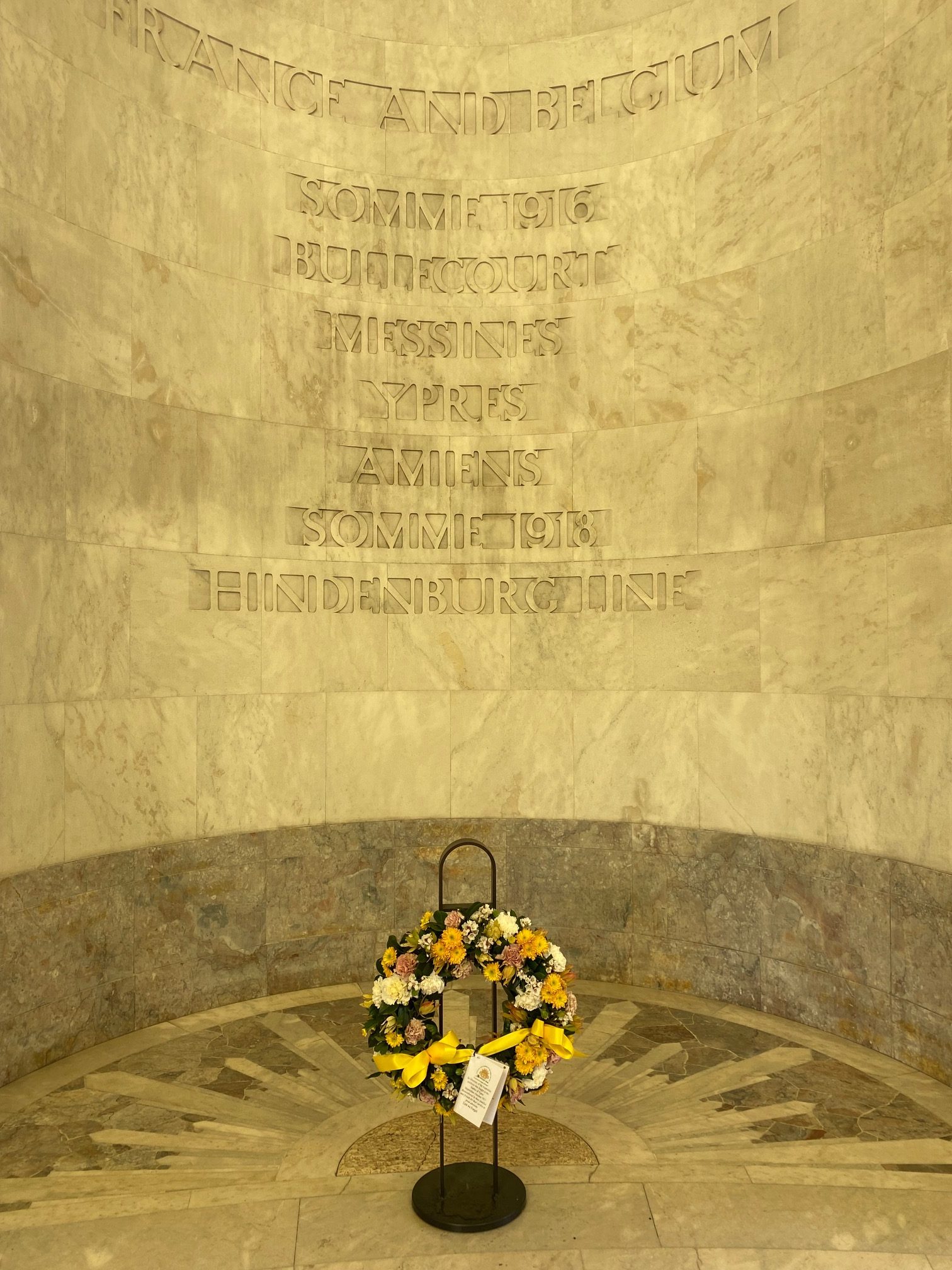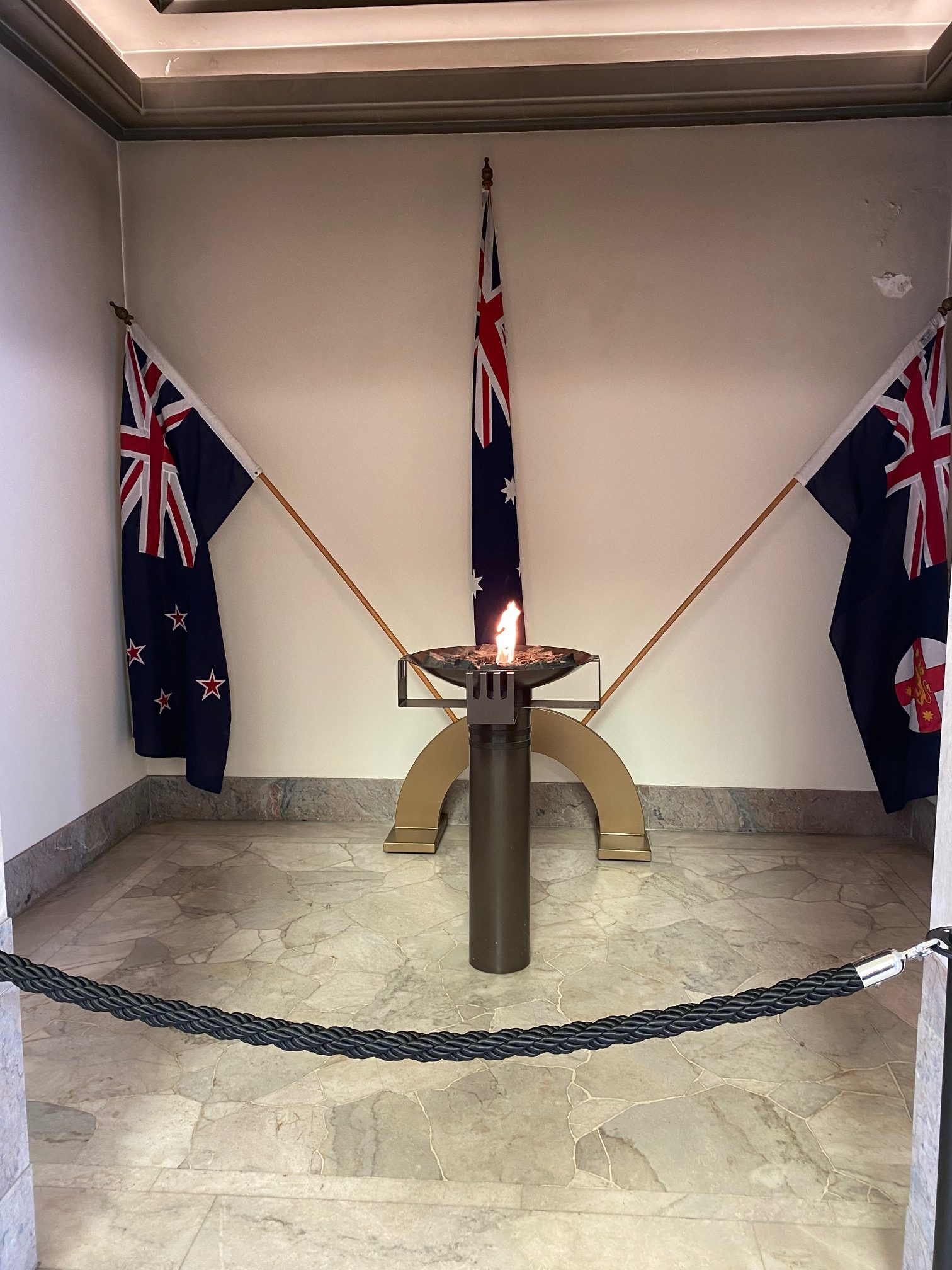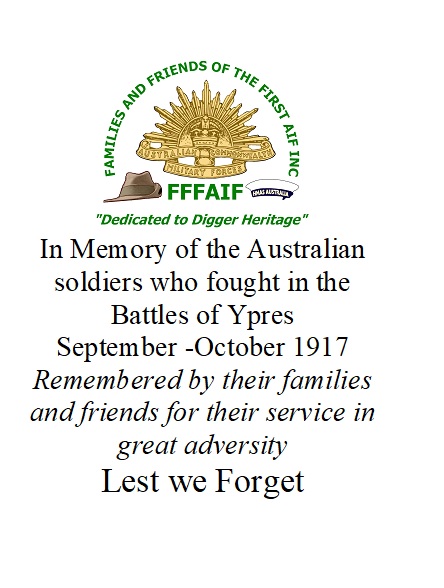A Message from Belgium
The Belgium Ambassador to Australia, His Excellency Michel Goffin, has commemorated the 105th anniversary of the Battles of 3rd Ypres with a message that draws parallels between current and historic events.
 The Belgium Ambassador to Australia, His Excellency Michel Goffin
The Belgium Ambassador to Australia, His Excellency Michel Goffin
Dear Families and Friends of the First Australian Imperial Force,
On this day, I would like to express my sincere gratitude to all the soldiers of the First Australian Imperial Force who paid the ultimate sacrifice on Belgian soil to defend us against tyranny. The Passchendaele campaign in 1917 was one of the greatest campaigns of the First World War. Five divisions from Australia participated in the 102 days of battles.
Today we should remember and commemorate even more than in previous years, because war has returned to Europe with the brutal and illegal invasion of Russia into Ukraine. For many years, we, as Europeans, thought that war would never come back and guns would stay silent forever. Our thoughts today are with the Ukrainian soldiers, their families and friends fighting to restore freedoms in their country.
Ambassador of Belgium Michel Goffin
The Passchendaele campaign, also known as the Battles of 3rd Ypres, involved 43 Divisions of British and Dominion troops including I ANZAC Corps, consisting of the 1st, 2nd, 4th and 5th Australian Divisions, and II ANZAC Corps consisting of the 3rd Australian Division, the New Zealand Division with 2 British Divisions on rotation. The battles lasted for 102 days with more than 300,000 casualties.
Australian Divisions participated in the following battles:
- Menin Road, 20-25 September 1917
- Polygon Wood, 26 September to 3 October
- Broodseinde Ridge, 4 October
- Poelcapelle, 9 October
- Passchendaele (First Battle), 12 October 1917
The Battles of 3rd Ypres commenced in fine weather but with the onset of the rains and the artillery damage to the drainage systems, by the later Battle of Passchendaele it became synonymous with “mud”, and the mud was as formidable an adversary as the Germans. It stopped movement, it killed men and animals by drowning, and guns and equipment were swallowed. It was one of the toughest tests any infantry faced with indescribable conditions, yet their sheer determination to succeed despite the conditions and their willingness to return again and again to the front line were the long-lasting memories salvaged from what ultimately was an operational disaster and have passed into legend.

Hellfire Corner on the Menin Road. 27 September 1917, Australian Official Photographer (Hubert Wilkins or Frank Hurley)

A scene on the Menin Road near Hooge, looking towards Birr Cross Roads, during the battle on 20 September 1917. The wounded on the stretchers are waiting to be taken to the clearing stations; others able to walk are making their way along the road as far as possible. Identified are: Major (Maj) G A M Heydon MC, Regimental Medical Officer of the 8th Battalion (fifth from the left with his arm in a sling). To his left is Private W Bain and next to him is Private (Pte) ‘Spud’ Murphy. To Pte Murphy’s left (wearing a pack) is 58 Lance Corporal (LCpl) Roy Arthur Findlay MM, all are members of the 1st Field Ambulance. 20 September 1917 Frank Hurley, Australian Official Photographer.

Five Australians, members of a field artillery brigade, passing along a duckboard track over mud and water among gaunt bare tree trunks in the devastated Chateau Wood, a portion of one of the battlegrounds in the Ypres salient. Left to right: 34158 Gunner (Gnr) James Macrea Fulton, 110 Battery, 10th Field Artillery Brigade; Lieutenant Anthony Devine; Sergeant Clive Stewart Smith. It has also been claimed that the third soldier from the left is 34451 Gnr Hubert Lionel Nichols with his brother 25180 Gnr Douglas Roy Nichols, immediately behind. The Nichols brothers both served in the 110th Howitzer Battery. All the identified men in this group served in 4th Australian Division artillery units. The last man in the group is unknown.
29 October 1917, Frank Hurley, Australian Official Photographer
Sydney wreath-laying
The continuing prevalance of COVID and therefore the restricted numbers able to attend a commemorative event, saw the President of the Families and Friends of the First AIF, Jim Munro, lay a single wreath in the France and Belgium Niche of the Hall of Memory at the Anzac Memorial at 11am on Monday 26 September as part of the daily Service of Remembrance.
Of special significance to commemorating the Battles of 3rd Ypres are the samples of soil transported from the battlefields to the Anzac Memorial in 2018 as part of the collection of soil from 100 Significant Military Sites and set into a ring embedded in the floor of the Hall of Service.

The Ypres soil sample was collected from “Dash crossing” Railway cutting 400 metres South East of Tyne Cott cemetery by COL S E Clingan, Defence Attache Commemorations and MAJ Andrew Coburn of the Australian Embassy Paris.
The Menin Road soil sample was collected from Hooge Crater Commonwealth War Graves Cemetery by NSW Premier’s Anzac Memorial Scholarship Students Kayla Godeschalk, Tyler Cashel and Rayleigh-Rose Biffi.
The Polygon Wood soil sample was collected from Scotts Post (Bunker) by His Excellency General The Honourable David Hurley AC DSC (Ret’d), when he was Governor of New South Wales, along with NSW Premier’s Anzac Memorial Scholarship Students Zac Barlow and Pippa Pryor and MAJ Andrew Coburn of the Australian Embassy Paris.
The Passchendaele soil sample was collected from the eastern side of the N303 road, near crossing of the ‘Australian walk’ railway line by COL S E Clingan, Defence Attache Commemorations and MAJ Andrew Coburn of the Australian Embassy Paris.
More information is available at The International Soil | Anzac Memorial, Hyde Park, Sydney (nsw.gov.au)
FFFAIF on behalf of all relatives and friends of the Australian soldiers involved in the Battles of 3rd Ypres would like to express our appreciation to the staff and volunteers of the Anzac Memorial for helping to commemorate the anniversary.


President of the Families and Friends of the First AIF, Jim Munro, laying a single wreath in the France and Belgium Niche of the Hall of Memory at the Anzac Memorial, Sydney





Post Commemoration
Following the Commemoration, the wreath was relocated from the Anzac Memorial to the RSL Life Care ANZAC Village at Narrabeen for the benefit of residents and staff.
Images and supporting information is from the Royal Belgium Embassy, The Australian War Memorial, The Anzac Memorial, Community Photography and by Jill Hayes and Jim Munro.
To download a Souvenir PDF version of this report, click on this link.
Posted by Jim Munro
26 September 2022
